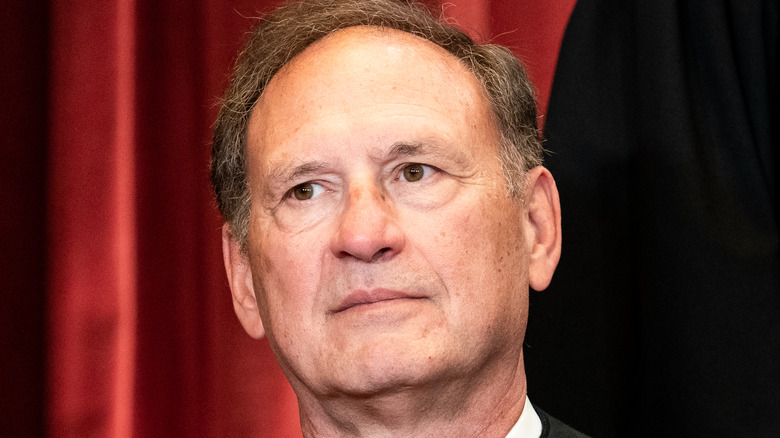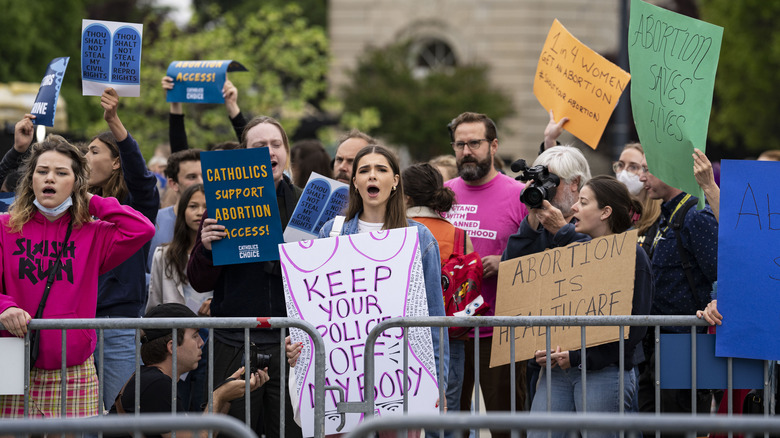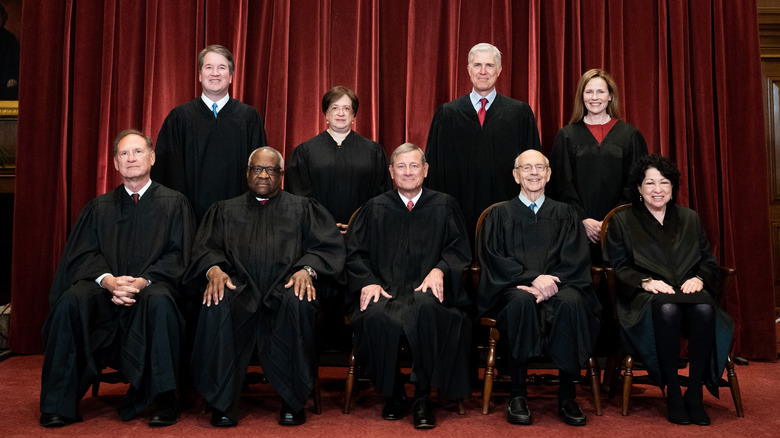Has A Supreme Court Draft Ever Been Leaked Before?
According to a U.S. Supreme Court draft opinion that was leaked on May 2, 2022, and published by Politico, the landmark decision known as Roe v. Wade would be overturned. Established as a precedent for decades, the 1973 ruling enforces a woman's right to have an abortion in the United States, via Cornell Law School. Marked "first draft," the leaked 98-page copy appears to be sent from Justice Samuel Alito to the other justices, signaling that women would lose a major federal reproductive right, per Politico. Alongside the shockwave that repealing Roe v. Wade sent across the country, people began to question — has a Supreme Court draft ever been leaked prior to a ruling?
According to AP News, Supreme Court leaks are pretty rare because of how sensitive the information is. The people who would have access to the information usually sign confidentiality agreements beforehand. And even then, usually, the only ones who see a draft opinion are staffers who have been working at the court for at least a year, along with the Supreme Court Justices themselves.
The first Supreme Court leak
The first recorded leak at the Supreme Court level happened back in the 1850s, according to Slate. In 1852, the decision in the case of Pennsylvania v. Wheeling and Belmont Bridge Company was leaked by the New York Tribune 10 days before it was supposed to be publicized. When the same case appeared before the Supreme Court again in 1854, the New York Tribune did it again, publishing the decision in advance a second time.
The source continued to give information to the press, giving details about the Dred Scott case as deliberations continued. Historians think that the leaks came from Justice John McLean.
AP News reports that throughout the 1970s, journalist Tim O'Brien was given insider information about Supreme Court rulings on at least six occasions. When the justices grew suspicious, they put the blame on someone at the courthouse print shop. O'Brien never gave up the identity of his source.
Then, in 1972, a leak happened in the case of Roe v. Wade, which was about to be ruled on (via Politico). As the justices were preparing to hear another round of arguments about the case, an anonymous source reached out to the press. The Washington Post per Politico reports that the story was run in the July 4, 1972 paper. The unknown source gave lots of details about the justices' drafts and memorandums, though it did not actually leak the case's decision, as the 2022 leak did.
The 20-second rule
However, per Slate, these leaks infuriated Chief Justice Warren Burger, who instated the "20-second rule." Any law clerk caught talking to a member of the press would be fired in 20 seconds or less.
Regardless, another Roe v. Wade leak happened the next year, 1973, in Time Magazine (via U.S. News & World Report). Though the leak occurred just hours before the actual ruling, The Washington Post reports that the weekly magazine was titled "The Sexes: Abortion on Demand." It hit shelves the same day the verdict was announced. The leaker, Larry Hammond, was a Supreme Court clerk at the time, and later gave interviews about his decision. He said he gave the information on background to a Times writer, but asked that the writer not disclose it until the opinion had been officially read. When the justices demanded to know who spilled the info, Hammond confessed.
Retroactive leaks
Slate reports that in 1977, more Supreme Court information was spilled to the media. This time, NPR reported that the justices declined to review the convictions of three people involved with the Watergate case. No one knows for sure who delivered that information to NPR.
Retroactive leaks happen much more frequently — there are at least five books that detail past cases. One of the more recent retroactive leaks was by a group of lawyers, who spilled the beans in 2004 about the 2000 Bush v. Gore case. They disclosed the deliberations made by the justices, which was never supposed to be known by the public.
So even though U.S. Supreme Court leaks are few and far between, there are some ways that information can slip through the cracks. Reporters want scoops, and law clerks or justices might have political motives that lead them to dish out info. The May 2022 Roe v. Wade leak, which was confirmed by the court to be real, is now being investigated by the Federal Bureau of Investigations (per NBC News).



